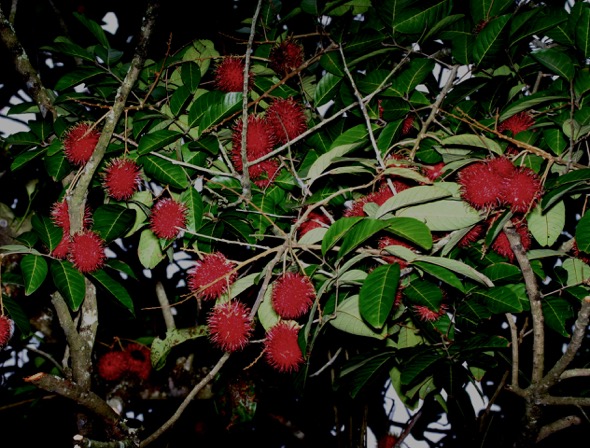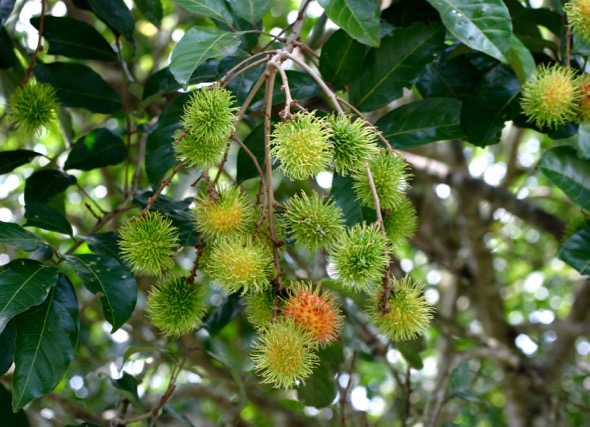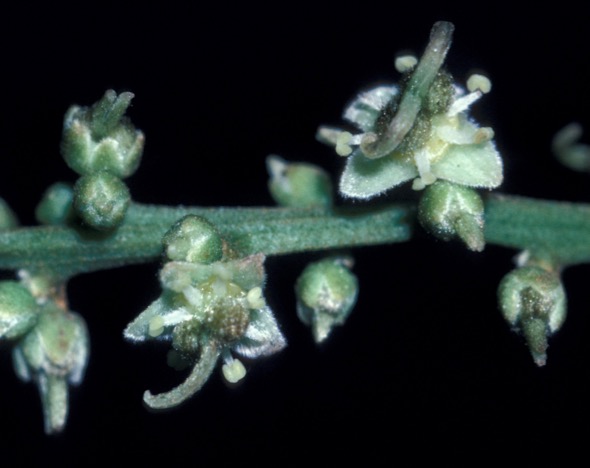
The Rambutan (Nephelium lappaceum) is a popular tropical fruit tree grown in fruit orchards as well as home gardens for its succulent fruits. The flowers are small, fragrant, greenish white and devoid of petals. Fruits are oval, ripening red or yellow and covered with coarse wavy hairs. The seed-pulp is white, juicy and depending on cultivars, sweet or sour.

Besides humans, many birds feed on the fruits.
The Oriental Pied Hornbill (Anthracoceros albirostris) swallows the fruits whole, the skin possibly regurgitated later LINK.

Asian Koel (Eudynamys scolopacea) is capable of swallowing the fruit with the seed after removing the skin LINK.
Black-naped Oriole (Oriolus chinensis) also feeds on the flesh LINK. Whether it is capable of breaking the skin has not been ascertained.

Parrots are attracted to the fruits, specifically the seeds. The Red-breasted Parakeet (Psittacula alexandri) possibly takes both the flesh and the seed (maybe preferring the seed?) LINK. The Rainbow Lorikeet (Trichoglossus haematodus) has also been seen enjoying the fruits LINK.

The Blue-crowned Hanging-parrot (Loriculus galgulus) is capable of breaking the skin of the fruit in order to feed on the juicy flesh LINK. Once the fruit was exposed, the Greater Green Leafbird (Chloropsis sonnerati) and the Yellow-eared Spiderhunter (Arachnothera chrysogenys) gained access to the juicy flesh LINK.
Similarly, both the Asian Glossy Starling (Aplonis panayensis) and the Javan Myna (Acridotheres fuscus) feed on the flesh only after the skin is broken LINK. The starling has also been seen eating pieces of the Rambutan leaf LINK.
The same is true with the Yellow-vented Bulbul (Pycnonotus goiavier) LINK and the Brown-throated Sunbird (Anthreptes malacensis) LINK 1 and LINK 2.

Another parrot capable of breaking off the skin is the Alexandrine Parkeet (Psittacula eupatria) LINK. In this case it was seen taking the seed. Another bird that is capable of breaking into the skin of the Rambutan fruit is the Common Flameback (Dinopium javanense) LINK. It then takes small globs of the flesh to obviously enjoy the sweet juice.
The tree is a fertile foraging ground for insectivorous birds as it is usually heavily infested with ants. However, we have yet to receive any documentation on this. As with most trees, it is a nesting site for birds – the Black and Red Broadbill (Cymbirhynchus macrorhynchos) is an example LINK.
NOTE: An earlier fruit tree showcased is the Durian tree (Durio zibethnus) LINK.
YC Wee
Singapore
31st December 2016








